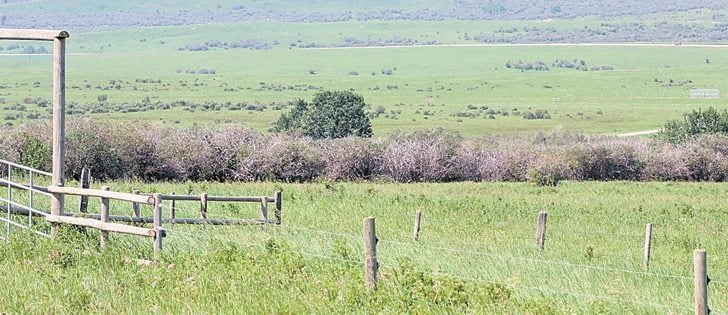Alberta range tour | Ranchers share pasture management trials and tribulations
CHAIN LAKES, Alta. — Where the Porcupine Hills rise to stare at the Rocky Mountains in the west, gold grows in the valleys between.
It’s the richness of rough fescue, a nutritious perennial bunchgrass, that has sustained the big cattle ranches for which this region is renowned.
“Our fescue grass to us is like gold, so we’re pretty careful with it,” said Sarah Green of Mount Sentinel Ranch.
She and her husband, Harley, took over ranch operations in 2005 from her father, Francis Gardner.
Read Also

Canadian Food Inspection Agency slammed for handling of bovine tuberculosis case
The federal government leans heavily on producers to “take one for the team” and risk their livelihoods without any reassurance of support.
“A lot of our grass and pasture management has stayed the same. Fescue grasslands have to be managed in a certain way,” she told a July 13 tour by members of the Society for Range Management.
This ranch, blessed with natural springs, has been in the Gardner family since 1898.
Gardner told the group that rough fescue is one of the main reasons for its longevity.
The hardy grass cures on the stem and retains much of its nutrition after maturity, which allows cattle to graze it in winter and limits ranchers’ feed costs.
That and water availability have been a boon to this ranch and others west of High River, Nanton and Claresholm in western Alberta.
“We have a really good example of a resurgence here where the spring water comes out of the bottom of these hills,” Gardner said.
“It’s a real bonus, a natural advantage in economic terms for these ranches in this area to have that kind of water.”
Many area ranches have been in operation for more than a century and have roles to play beyond cattle production, he said.
“It shows you the kind of relevance that these ranches have in terms of perspective that people have that live in the country. They value these big ranches. I think they’re important to the province in terms of the way people perceive looking after watersheds and wildlife and all the other things that go hand in hand with the elasticity of a ranch.”
The mild winter of 2011-12 allowed Mt. Sentinel cattle to graze until March without supplemental feed, which Gardner called “a pure gift.”
At the nearby Chattaway ranch, the Bar S, Clay Chattaway said he and his family didn’t feed their cattle until April, and then only to keep them out of pastures during a vulnerable growth period.
For them, rough fescue is also one of the primary reasons for grazing management strategies.
“We do some haying. We’re wrestling with whether or not we should be haying, but it’s hard to break old paradigms,” Chattaway told the tour group, which admired the rolling hills of the Bar S.
The ranch sits on more than five sections and this year fed 1,000 cows and 1,250 yearling steers.
Chattaway’s grandfather had a continuous grazing system and his father developed a more time-controlled approach.
Now, with the relative ease of electric fencing, Chattaway said he and his sons have a more sophisticated plan for timed grazing that is designed to fatten cattle while maintaining pasture strength.
Chattaway’s son, Morgan, said the cows were fed for only 12 days this spring. The hardy Beef Booster animals will paw through snow to get adequate feed, though that wasn’t necessary for many days this past mild winter.
In summer, when the grass is growing, Morgan said steers can gain up to four pounds per day in a fresh pasture. Daily gain deteriorates along with forage availability, so the animals are moved regularly. Pastures receive 70 days rest between grazing periods.
“We still use fescue as an indication as to whether we’re headed in the right direction or not. If we saw we were losing fescue population, we’d change something to maintain it,” Clay Chattaway added.
Other grass invaders, weeds and brush encroachment continually challenge rough fescue and other native pasture.
Chattaway said he has experimented with fire to control the challengers, with limited results.
“After we had our controlled burn, we came to the conclusion that the difference between a wild fire and a controlled burn is that there’s beer at a controlled burn,” he said, to a chorus of laughter.
The Bar S eventually ended the practice.
“It just got too hard on my nerves,” said Chattaway, noting he once burned 40 acres intentionally and another 80 unintentionally.
Similar challenges exist for the Greens. Herbicides aren’t an answer for weed and brush control because the ranch has been organic for 16 years.
Weeds must be pulled, mowed or subjected to intense grazing to control them.
This year they lost two animals to larkspur, a weed poisonous to cattle. Other grasses can also be troubling.
“Timothy and tame grass is a big challenge,” Sarah said.
“It limits your winter range and it’s slowly encroaching. That’s limiting our winter feeding abilities.”
















